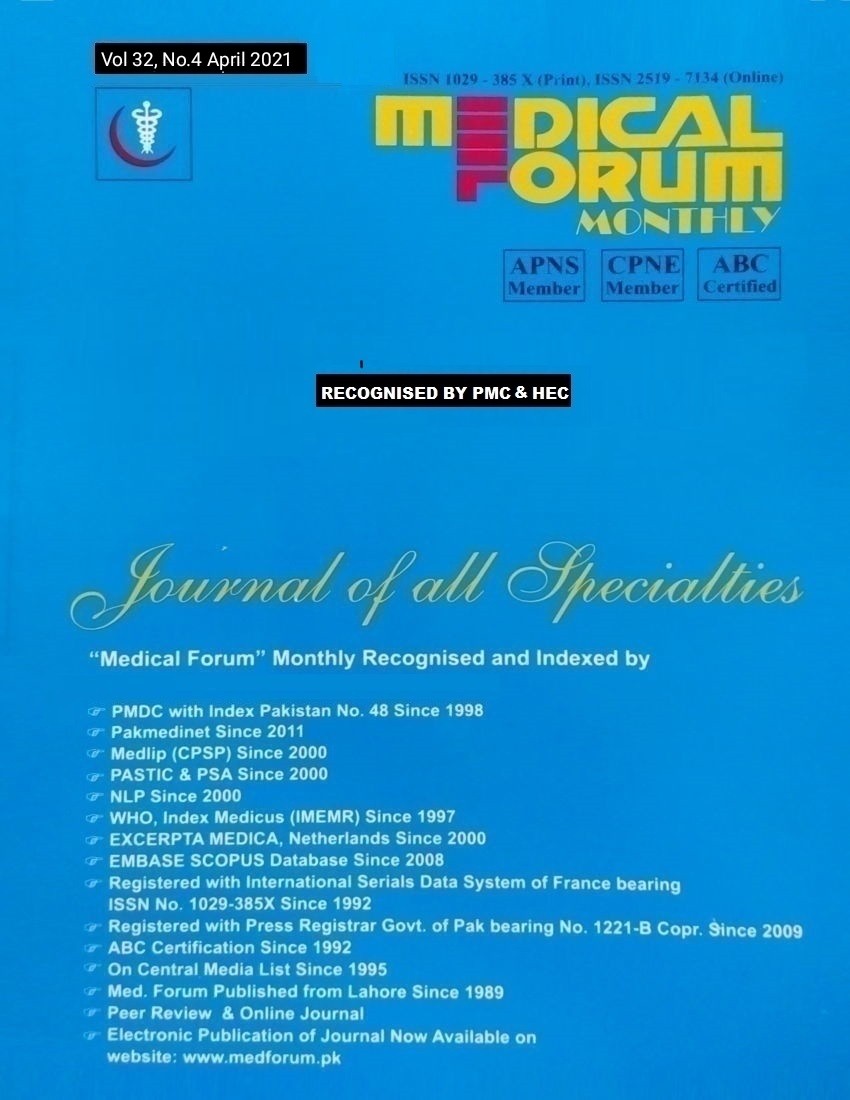
10. Incidence of Sensor Neural Deafness in Children with Cerebral Palsy
Muhammad Arif1 , Abid Hussain1 , Muhammad Awais Saleh2 , Muhammad Faizan1 , Raffad2 and Junaid Ghaffar1
Abstract
Objective: To study the Incidence of Sensor Neural Deafness in Children with Cerebral palsy.
Study Design: Observational and Experimental Study.
Place and Duration of Study: This study was conducted at the Idris Teaching Hospital Sialkot Medical College Feb 2018 to Jan 2020.
Materials and Methods: One hundred and seventeen patients of sensor neural deafness of cerebral palsy were included in this observational and experimental study. History, examination and demographic data was recorded in the design Performa. Informed Written consent was taken Priorly in every case. The permission of ethical committee of the institute was also considered. The results were analyzed on SPSS version 20.
Results: The incidence of Cerebral palsy was maximum 34(29.05%) Quadriplegia patients and minimum 13 (11.11%) Hemiplegia. The incidence of Audiometry Behavioral threshold was maximum in Athetoid 9(36.00%) in mild behavioral threshold and minimum in Athetoid 2(8.00%) and atonic threshold 2(10.50%). In Hearing screening there was incidence maximum refer patients 40(54.79%) and minimum in atonic 7(17.50%). The type of hearing was maximum in type B 8(42.10%) in spastic patients and minimum in type B Atonic 3(23.07%). ABR in incidence was maximum 10(41.66%) in moderate spastic and Athetoid patients and minimum in severe atonic patients 2(33.33%). The incidence of hearing impairment was maximum in spastic cerebral palsy 9(37%) in conductive patients and minimum in hypotonic cerebral palsy 6(25%). The incidence of cerebral palsy was maximum 35(62.50%) in male in age group 11-15 years and minimum 21(37.50%) in age group 5-10 years. The incidence of cerebral palsy in female was maximum 39(63.93%) in age group 11-15 years and minimum 22(36.06%) at age group 5-10 years.
Conclusion: Cerebral palsy (CP) is often accompanied by other disorders of cerebral function. Auditory disorders are very frequent in this population. The identification of hearing impairment also important as disorders of hearing is changeable and manageable with wide range of medical, to restore to good health devices, and treatment techniques. Therefore, the identification of hearing impairment in children with CP may suggest appropriate line of management and can provide important prognostic information.
Key Words: Sensor neural, Deafness, cerebral Palsy, Children.
Citation of article: Arif M, Hussain A, Saleh MA, Faizan M, Raffad, Ghaffar J. Incidence of Sensor Neural Deafness in Children with Cerebral Palsy. Med Forum 2021;32(4):37-40.
